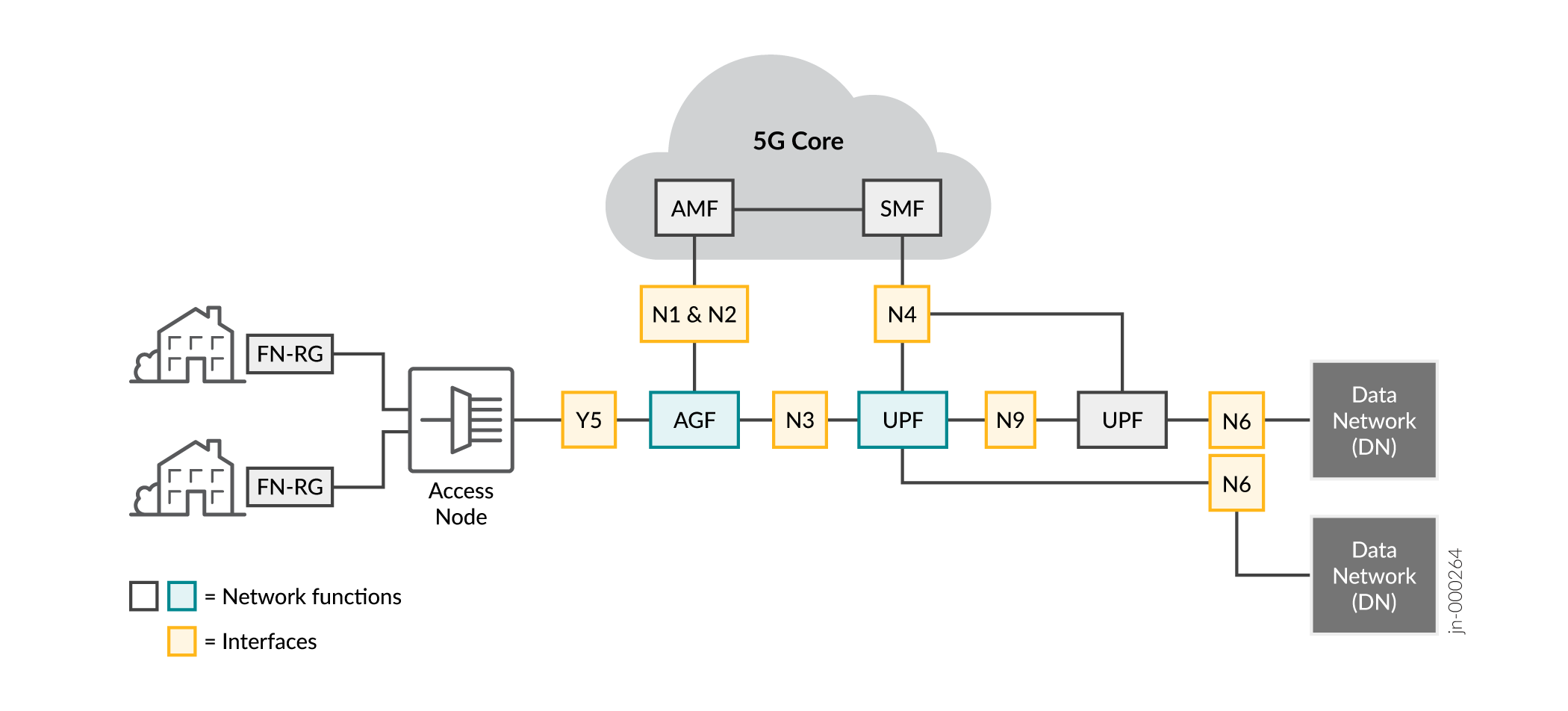Overview of 5G
5G is the fifth-generation technology standard for wireless networks. 5G delivers higher data speeds, lower latency, and supports more users, devices, and services while simultaneously improving network efficiency. As defined by the Third-Generation Partnership Project (3GPP), the 5G core (5GC) network is a cloud-aligned, service-based architecture (SBA) and covers all 5G functions and interactions. The converged 5GC lays the foundation for a single subscriber profile and policy management for both the existing wireline users with installed router gateway and the new 5G wireless users. The converged core offers the following benefits:
-
Single control plane for wireline and wireless subscribers
-
Ease of migration for existing subscribers to 5GC
-
Access to a wireline fixed network router gateway (FN-RG)
-
Hybrid access with a 5G residential gateway (5G-RG) for increased bandwidth and increased availability
-
Single Operation Support System (OSS) and Business Support System (BSS) integration
Components in a 5GC Network
Figure 1 shows the key components for the 5GC network to which the FN-RG has connected by using an Access Gateway Function (AGF). Table 1 describes the key network functions and the logical interfaces between them. The interaction between the key network functions and the logical interfaces is defined by the 3GPP. Other functions and interfaces defined for the 5G network are beyond the scope of this guide.

| Functions and Interfaces | Description |
|---|---|
|
Access Gateway Function (AGF) |
Provides the access connection for residential gateways (RGs) to connect to the 5GC. In adaptive mode, the AGF emulates N1 signaling for the FN-RG to connect to the 5GC. Additionally, the AGF sends messages to the AMF over the N2 interface and sends the protocol data unit (PDU) session traffic over the N3 interface to the UPF. |
|
Access and Mobility Management Function (AMF) |
Responsible for registration management, PDU session management, and forwarding of access facing traffic to and from the access network. |
|
Fixed Network Residential Gateway (FN-RG) |
Connects the home network to the WAN. An FN-RG is a wireline device and works in a wireline network. It does not send signaling associated with RAN found in 5GC networks. For an FN-RG, N1 signaling originates on the AGF. The AGF acts as an endpoint on the 5GC and handles all N1 signaling on behalf of the FN-RG. You do not need new hardware or changes to the existing FN-RG hardware to work with AGF. |
| Session Management Function (SMF) | Establishes PDU sessions and interacts with the user plane function (UPF). |
| User plane function (UPF) | Supports packet routing, forwarding, packet inspection, PDU
session,
and flow-level QoS. Note:
An UPF can be external or colocated with the AGF. |
| N1 | Interface from the user equipment (UE) to the AMF. The N1 interface uses non-access stratum (NAS) layer signaling to exchange UE information that is related to connection and session that the UE establishes with the 5GC network. |
| N2 |
Control interface that connects the AGF to the AMF. |
| N3 |
The AGF connects to the UPF over the N3 interface using the general packet radio service (GPRS) tunneling protocol. The AGF and UPF exchange PDU session information over the N3 inteface. |
| N6 | Interface that carries data between the UPF and the data network. |
| N9 | Interface that connects one UPF to another. |
| Y5 |
Interface that connects an FN-RG to the AGF over the wireline access network. The Y5 interface is the equivalent of the V interface in wireline broadband networks. |
